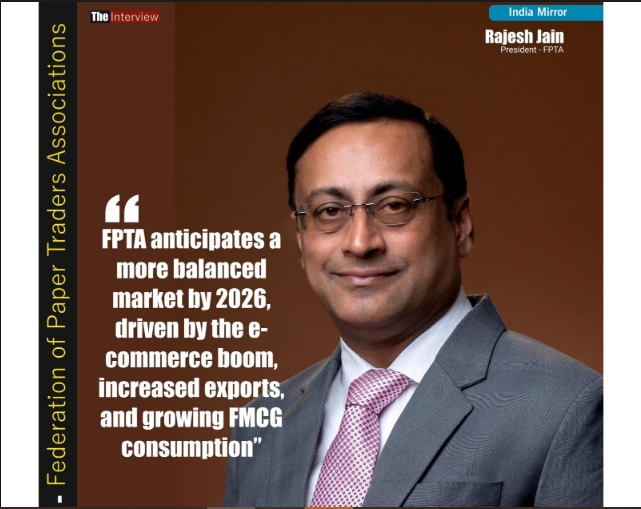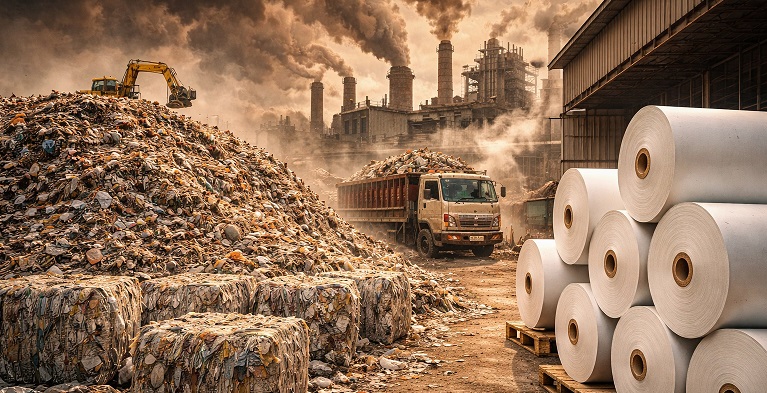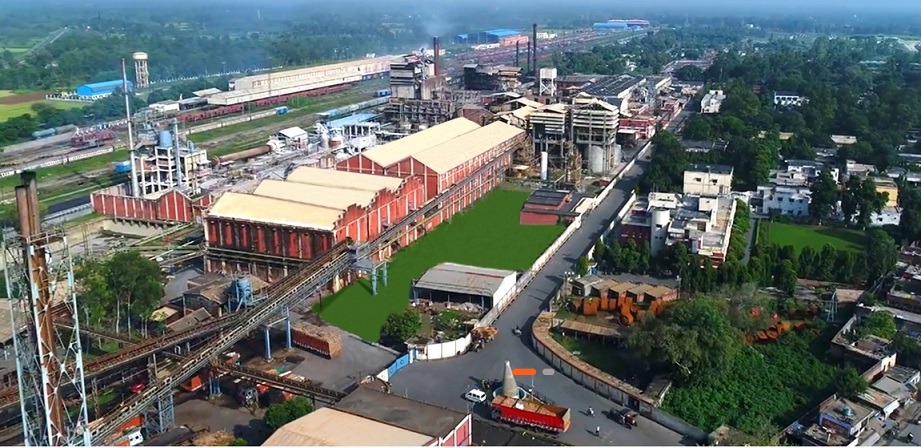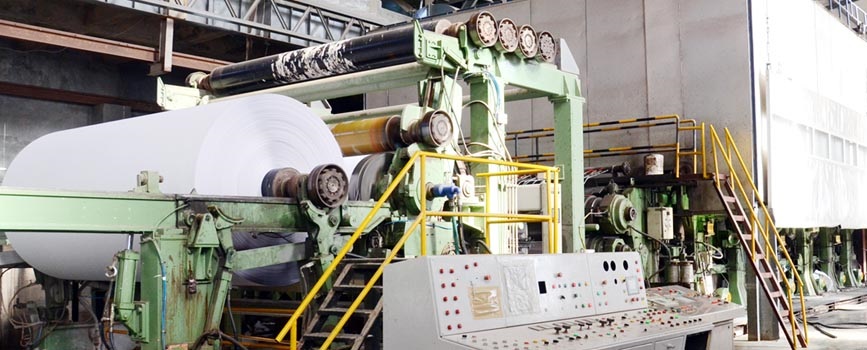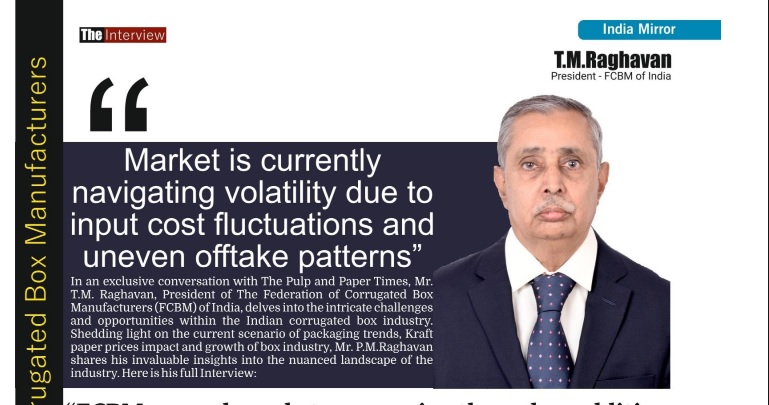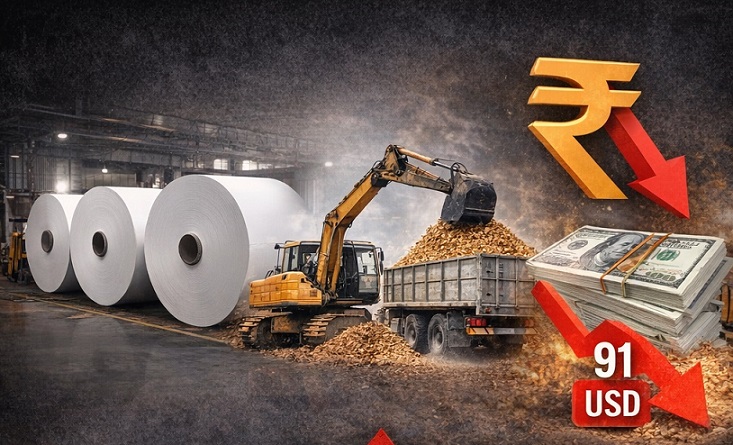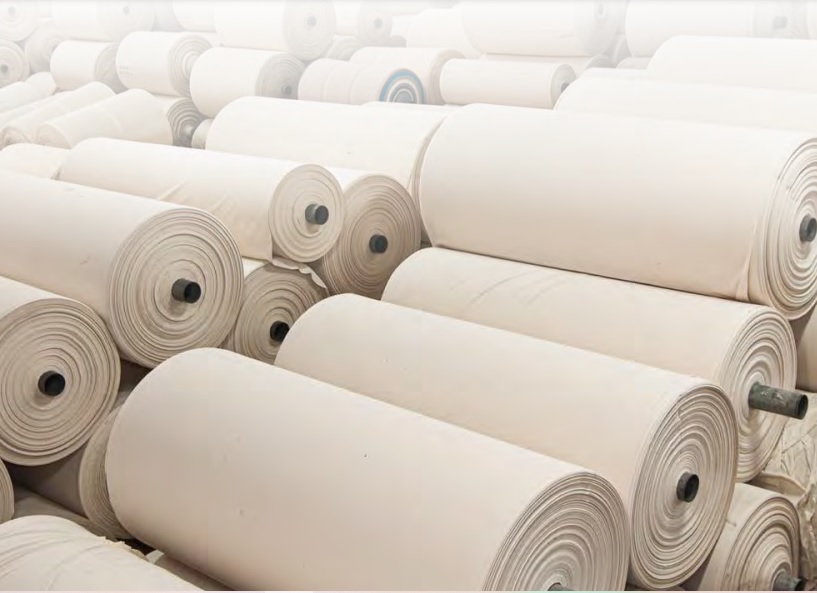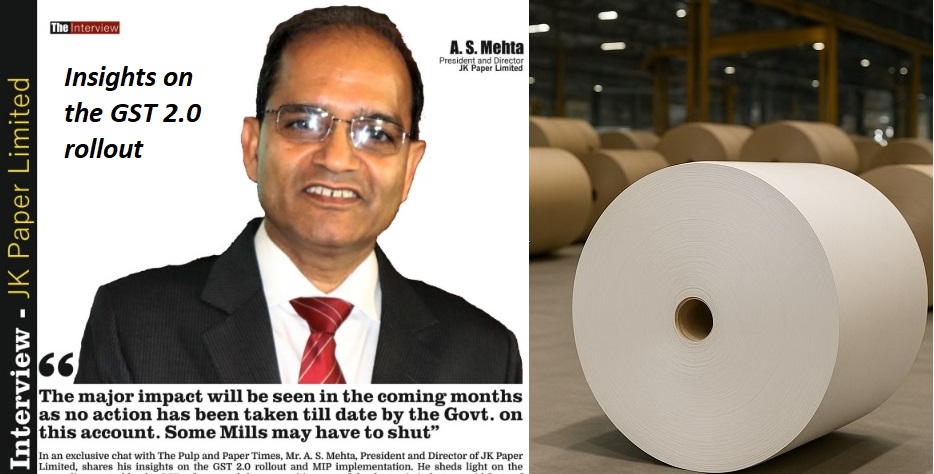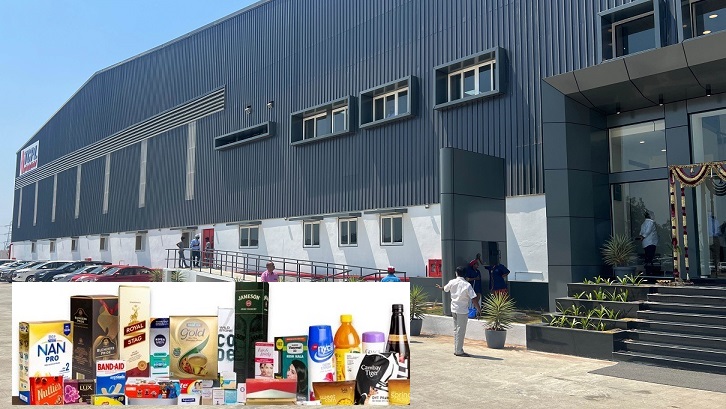Next Gen Leaders chart future course for Indian Paper Industry: Insights, Solutions, and Vision 2030
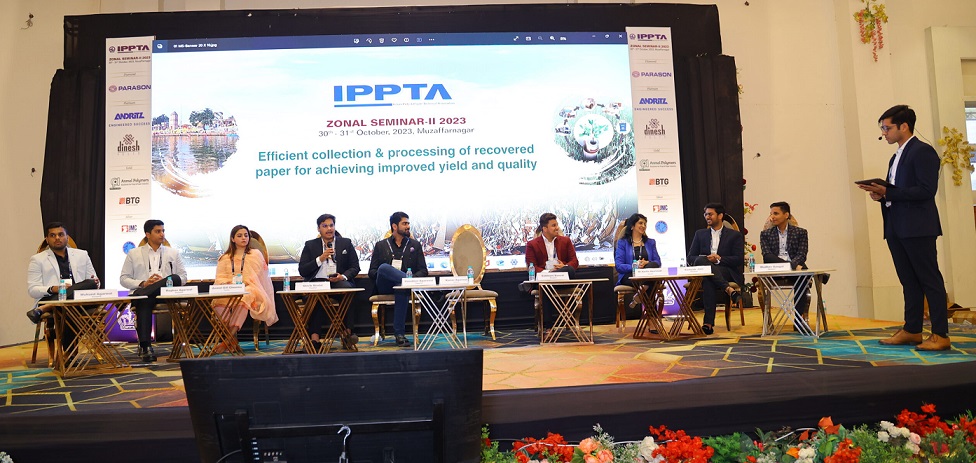
Next Gen Leaders chart future course for Indian Paper Industry: Insights, Solutions, and Vision 2030
- Approximately 250 million students are going to schools as of now, which highlights the huge demand for printing and copier paper present in the Indian market.
- Due to automization, we have saved up to 25% of energy and consumption of water is also reduced to 30 to 40%.
- Do the market research and identify the needs of the customer.
- India does not recover paper in a way that other countries recover. Currently, India recovers around 65% of paper, and we can take that to 85 to 90%
A group of young leaders, with an average age of 25, have shared their insights, views, and solutions for some of the challenges faced by the paper industry. They discuss how they are coping with these issues and what steps they are taking to minimize their impact.
The Pulp and Paper Times:
Mr. Kanav Agarwal, Director of Naini Group of Industries, moderated a panel discussion at IPPTA's Zonal Seminar in Muzaffarnagar. He stated that the panel would engage with the next generation of leaders and gather their perspectives on Vision 2030. The discussion would focus on how they perceive the industry evolving over the next 5 to 10 years.
Answering a question on sustainability being an important focus point for modern corporates and organizations and how the paper industry is perceived, Dr. Aarti Agarwal from Annapoorna imports said, “The paper industry has grown significantly in the last decade. In 2017, paper production was around 20 million tons and now it grew up to 30 to 31 million tons. The growth is tremendous in the paper industry and to sustain it, there is a need to take certain points into consideration such as not being dependent upon the natural resources, look towards other renewable resources, and secondly, we look for the alternative uses of paper because with digitization, there's a less of demand of paper, and lastly, we should look forward for the environment friendly techniques for our vision 2030.”
Ms. Anmol Gill Cheema, Director of Cheema Papers Ltd., while answering a question on availability as well as the quality of skilled workforce in the paper industry, said, “In the last 2 years, I noticed that availability of skilled workforce is scarce. I would say this is because at our level, we do not have funds to give salaries which bigger units can afford. Secondly, I feel something is lacking in our generation, like what I hear from my in-laws where one could interact with all officers and workers and learn from them but, today you cannot. To mitigate this, we are trying to gain as much technical knowledge as possible on the floor level and become self-sufficient to the maximum extent. Thirdly, we keep interacting with the other paper units and stay aware of what is happening in the market so we are not left behind. Lastly, we are trying to inculcate this idea of teaching the manpower in whatever capacity we can.”
Mr. Vasudevv Agarwaal, Director, DLS Paper, answering a question on the decline in the availability of unskilled labor, said, “The unskilled labor work on emotions rather than the money. They work for like less than 10,000 rupees a month. There are various reasons for the same as most of them work on farms and get ample money from farming. Secondly, they want their children to learn so they do not end up as unskilled manpower, which is a good thing. Lastly, I feel that the industry is not paying them properly and enough money, which is why they are not coming towards the industry.”
Sharing his views on issues faced related to manufacturing recycled grades and raw material availability, Mr. Sidhant Bansal, Director, Shree Bhageshwari Papers Private Ltd., said, “Firstly, the quality of raw material is inconsistent because that raw material generated is post-consumer and post-industrial waste. The raw material is contaminated and contains metal and plastic as impurities, so the quality is inconsistent. When recycled, the feedstock also gets contaminated, also there is variability as the waste is collected from different sources, so we cannot give the customer a consistent quality product. Lastly, we are implementing a sorting facility to improve the quality. We import waste from some underdeveloped nations who do not have proper sorting techniques, and sorting facility will help us get a consistent quality of raw material."
Adding further, Mr. Madhav Sangal, Director of Sidharth Paper (P) Ltd., said, “One thing which we can do is invest in the machines and the technical aspect of the factory so that the raw material that is coming to us from irregular channels can be converted into the pulp in such a way that we can use it according to ours and our customers' need. Another problem with the quality and the quantity of paper is the localization of the market, there are a lot of hubs which have surfaced all over India, due to which the industry, in a sense, is limited to a 500-700 km radius.”
Answering a question on foreseeing the availability of Agro-based raw material in the upcoming future, Mr. Shivik Bindal, Director of Bindal Paper Mills, said, “We manufacture our entire range of paper using Agro-based residual waste material like bagass and Wheat straw. In the last couple of years, we have faced many issues in the availability due to the COVID, after which there was a rise in coal prices because of the shortage in demand, and the high demand for industrial power that occurred all of a sudden when the businesses restarted. The vast increase in the exported coal market and the lower coal prices domestically led many industries to switch to biofuels such as wheat straw, bagass, and Wood chips which were our prime materials for paper manufacture. Future government policies also play a vital role as after COVID-19 the government advised Industries in the NCR region to implement CNG in their boiling system and move on from traditional sources to other sources and therefore it will further exert pressure on the Biofuel. To conclude, the availability of raw material will cause greater challenges in the future."
Mukund Agarwal, Director, Tehri Pulp and Paper Ltd., while attending a question on technology that could help paper industry and what are the prerequisites for the same, said, “What I observed is the automation should be implemented in a proper manner at a proper time. We should use technology to get efficiency from every part and it is not the time to do experiments or to do only the cost cutting. we should focus on the return of investment I think the return of investment decides our decision is good or bad for the industry. With atomization we are maintaining the linear load around 400 kg in place of 250, our moisture content is also reduced up to 4 to 5%, and the machine speed also increased. Due to automization, we have saved up to 25% of energy and consumption of water is also reduced to 30 to 40%.”
Samyak Jain, Director of Silverton Pulp and Paper, speaking on the importance of R&D and maintaining a diverse product portfolio, said, “In today's world customer is the king. Whatever product you make if you don't have customers, you can't do anything about it. Basically, for that, you have to do market research and identify the needs of the customer. After meeting dealers and customers, the next step is product development. It is then you come back to the technical team, have discussions, and decide how to develop that product, make it cost-effective, and earn profit.”
Sharing his insights on the declining demand for fine paper, writing-printing paper, and copier paper, Mr. Shivik added, “The global copier paper market is currently valued at $15.1 billion and it is expected to reach a valuation of $17.6 billion by the year 2033, so I would not say that it is in a declining phase or a negative growth rate. However, the growth rate is not something to be proud of but we have to also consider that this is the global market we are talking about. The Indian market is a lucrative one due to the increasing focus on education and literacy by the current Modi government. According to the India Brand Equity Foundation, approximately 250 million students are going to schools as of now, which highlights the huge demand for printing and copier paper present in the Indian market. Paper sales are expected to grow at a favor of 8 to 9% over the next 5 years and the major backing up will be due to the implementation of the National Education policy.”
Talking about evolution in the industry by 2030, Mr. Vasudevv added, “India has the advantage of having the biggest workforce in the world which is why all the big companies are coming here. Our industry should focus on manufacturing different kinds of paper and of different qualities because, right now, every mill is making the same paper and that is causing loss to the mills. We should take the opportunity and go out to see what kinds of different papers are manufactured across the globe. I think that should be our vision because India can make anything a lot cheaper than anywhere in the world. Secondly, I feel that we should focus more on recovering the waste. India produces more waste and for the last 5 years, I have seen that India does not recover paper in a way that other countries recover. Currently, India recovers around 65% of paper, and we can take that to 85 to 90%.”
When asked about their experiences as women in a male-dominated industry and the factors contributing to the gender imbalance, Dr. Aarti stated that although she faced gender imbalance when she first entered the industry, people have become more accepting of women over time. She believes that the gender imbalance is not the fault of the paper industry but rather a result of societal norms and networks. One major factor she noticed was the uneven access to education. Mrs. Anmol added that most paper mills are located in tier-3 cities, where business families dominate, and exposure is limited compared to tier-1 cities. She experienced this when she moved from Bombay to Kashipur, a smaller town. She also pointed out that the gender imbalance in the paper industry is not unique, as statistics show that only 20% of women in India are part of any manufacturing unit. Despite gender equality being at 50% in some states, other states have not yet accepted this.
Web Title: Next Gen Leaders chart future course for Indian Paper Industry: Insights, Solutions, and Vision 2030




 Join WhatsApp Group
Join WhatsApp Group Join Telegram Channel
Join Telegram Channel Join YouTube Channel
Join YouTube Channel Join Job Channel (View | Submit Jobs)
Join Job Channel (View | Submit Jobs) Join Buy Sell Channel (Free to Submit)
Join Buy Sell Channel (Free to Submit) Paper News Headlines Channel (Free to read)
Paper News Headlines Channel (Free to read)



